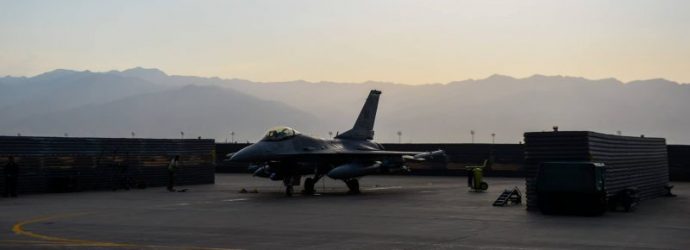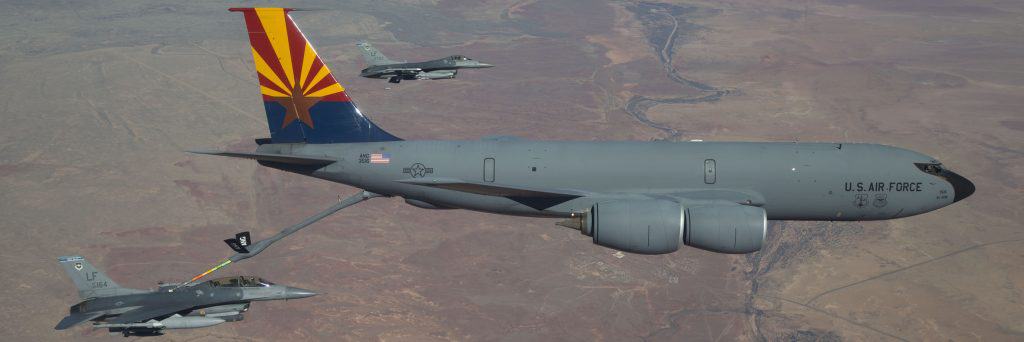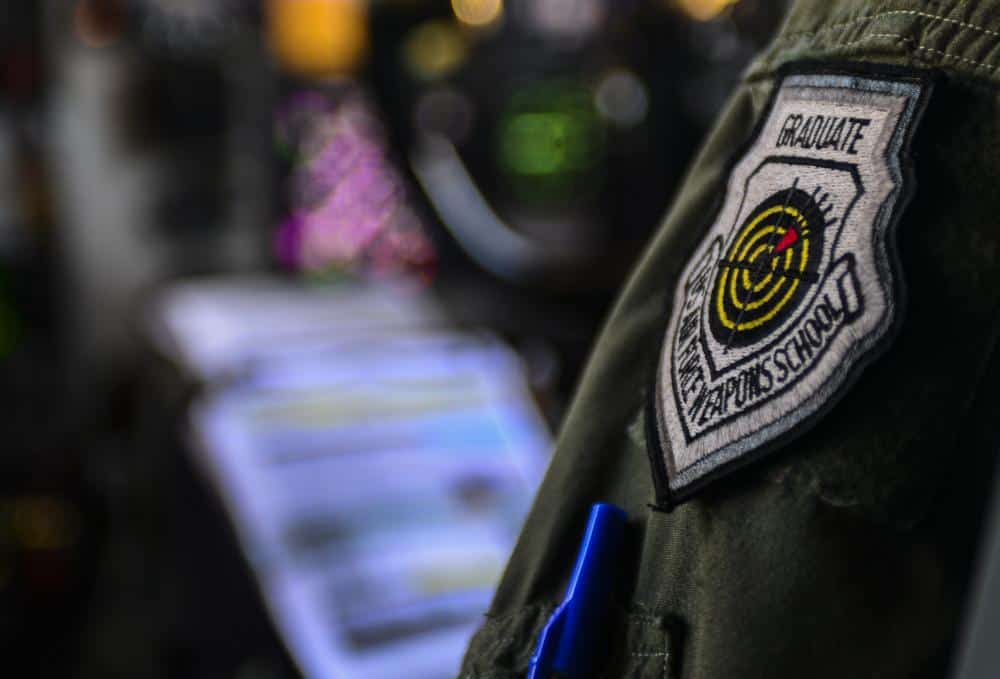Deployments and the Guard/Reserve Pilot

No matter which aircraft or unit you choose to pursue, chances are you will end up spending some time deployed as a pilot in the Air Reserve Component (ARC – shorthand for Guard and Reserve). The location and durations may vary between different mission design series (MDS) aircraft, but you’ll undoubtedly get to experience the gratification (and sometimes frustration) of serving the United States in far corners of the world. The purpose of this article is to inform potential ARC pilot candidates about the myriad of deployment experiences, accompanying financial and pay considerations, and shed some light on just what exactly you may be signing yourself up for.
Table of Contents
- What is a Deployment?
- Preparation
- Activation
- Deployed Life
- Returning Home
- Active Duty Deployments: A Comparison
What is a Deployment?
First, what exactly is a “deployment?” The term has evolved into a ubiquitous reference for any temporary duty assignment (TDY) levied on a unit to support “overseas contingency operations,” or OCO. For ARC units, this means activating the unit into a new funding status which I’ll discuss more in detail later. OCO are mostly combat operations funded outside the Department of Defense’s (DoD) baseline peacetime budget. In general, most ARC unit trips are to support US Central Command, or CENTCOM, in their prosecution of multiple operations in the Global War on Terror. Under the OCO umbrella, units could support or participate in several ongoing operations, such as Operation Enduring Freedom in Afghanistan or Operation Inherent Resolve in Iraq and Syria. Depending on your unit, you may base out of locations far from the actual operation; a perfect example would be a KC-135 or C-130 crew staging out of Europe or the UAE to support theater operations in Iraq. Other potential destinations could be theater support deployments to Europe or East Asia. While not necessarily OCO, they are nonetheless considered deployments based on unit activation status.
Preparation
Prior to a deployment, your unit will likely have a decent idea of when and where you will be going. For mobility units like tankers and theater airlift, the duration of the trip may be slightly shorter than for fighter and bomber units. Further, mobility units may experience less of a need to “spin up” or heavily prepare for their trip, since they will generally be accomplishing the same mission they do during their normal peacetime operations. Some notable exceptions could be tactical and strategic airlift into contested or hazardous areas or special operations support. These trips will undoubtedly require some specific unit preparation prior to deployment. This will likely mean more full-time orders available or required for part-time pilots in the squadron.
For ARC fighter units, deployments will generally last around 3 months, although many squadrons will break this down into two 45 day periods and spread out the burden of separation. If the squadron knows the location, area prep and “spin up” will start 8-12 months prior to the deployment departure date in order to familiarize themselves with requirements specific to employing weapons in their specific combat zone. “Spin ups” for fighter units will also generate more full-time requirements to ensure minimum sortie counts and specific weapons qualification events are met by all the deploying pilots.
Activation
At some point prior to your unit departing, it will be officially activated from the ARC. At this point the unit transitions from being a “reserve” component unit to an “active” unit. This activation accomplishes multiple administrative requirements. It generally will place the squadron members in Title 10 status, meaning they are now “Active Duty” and funded by the federal government. For an in-depth discussion of different Guard status possibilities, see Jason Depew’s BogiDope article, “What’s Your Status?”
Without getting into too much administrivia, this activation means several things for the ARC pilot. First, it will allow for access to military health care for you and your family through Tricare. For part-time flyers that rely on other sources of healthcare, this can free up some funds by providing free medical and dental both before, during, and after the deployment. Again, Jason did a phenomenal job breaking down the different health care options in his article “Health Insurance Basics for Pilots.” If you’re interested, investigate that article for further data on health care.

Second, it will mean you eventually transition to full-time federal active service on military orders. This will generally happen when you depart on your deployment. When this happens, you’ll get paid as a full-time active duty officer and the time will count towards an “active duty” or 20-year federal service retirement. Further, you’ll attain eligibility for VA benefits. Once you deploy, you’ll also likely be eligible for additional pay, such as family separation allowance, hazardous duty pay, and possibly even a combat zone tax exclusion (tax-free pay for the month if you are in the designated zone). Needless to say, deployments offer a unique financial benefit by relieving health care costs and adding extra pay–though often this benefit goes into offsetting potential earnings lost when you can’t work a civilian job while on full-time military orders.
Speaking of which, activation will mean you must take leave from your civilian job if you are a part-time Reservist or Guardsman. That may mean sacrificing airline trips or losing business opportunities depending on your career. For the full-time squadron members, Air Reserve Technicians (ART) or Active Guard Reserve (AGR), little will change with activation. ARTs will be required to place themselves in a “leave” status from their civilian technician jobs, but they can utilize military leave and still receive a civilian paycheck. For a more detailed description of how ARTs are compensated, see my article, “ART Explained.”
Deployed Life
After activating and preparing, you’ll finally make the move to your deployed location. You’ll hear it described as “down range,” or “in the AOR (area of responsibility).” They all generally mean the same thing: over there. While deployed as a Reservist or Guardsman, your only job will be to fly your unit’s assigned mission. You will not be expected to or even legally allowed to do work in a civilian or different capacity. Your government is paying you exclusively for your federal service in support of the previously discussed OCO.
Depending on the activity in your particular area, sorties can range from extremely boring to immensely busy. Mobility pilots will find themselves flying into austere locations and supporting all sorts of operations. Fighter pilots will be employed flying close air support (CAS) or strike missions supporting both our own troops and friendly forces on the ground. Deployed flying can be some of the most rewarding experiences in your life. It can also be a blur of monotony. Either way it will change you, challenge you in various ways, and make you thankful for your life back in the good ol’ United States.
When not flying, you’ll have ample time to study, go to the gym, read, and raid the dining facility (DFAC). Most pilots find their time overseas to be periods of healthy “renewal” and arrive back home in great shape. You generally won’t be allowed alcohol, especially if at a more forward, austere, or hazardous location. Housing can be anything from your own hotel room to a tent shared with the whole squadron. When you finally wrap up the deployment and move back home, you’ll have created lasting memories and become much more tight-knit with your squadron (for better or worse!).

Photo Credit: Author
For a more in-depth description of life as a deployed fighter pilot, be on the lookout for my upcoming article, “Diary of a Deployed Fighter Pilot.”
Returning Home
As your activation period draws to a close, you’ll return back home. Sometimes this means you will fly your squadron’s aircraft all the way back from the deployed location to your home base. No problem for the mobility pilots. For fighter pilots the shuttle flights to and from the deployment can be long and arduous in your tiny capsule of a cockpit.
Upon returning home, your activation will cease and you’ll revert back to your pre-deployment status. Part-timers can return to their airline or other civilian jobs, ARTs become civilian technicians again, and AGRs don’t really change anything. Your special pay and allowances will stop, but you and your family will continue to receive free healthcare through Tricare for up to six months after you return. You’ll likely have to complete a myriad of post-deployment medical checks, finance briefings, and other administrative tasks. Usually, the squadron will take some downtime to allow both pilots and maintenance personnel time off. You’ll have accrued leave while on active orders, so most pilots take the leave upon returning home to spend time with family and recharge from the deployment. Usually, your squadron will return to normal peacetime operation within a month or so of returning from the deployment.

Active Duty Deployments: A Comparison
One interesting point to consider when discussing ARC deployments is their comparison to an Active Duty unit’s deployment. Having participated in both types, I can offer the following:
Active Duty deployments are much, much longer. My most recent deployment in the Reserves was 46 days total. My previous deployment as an Active Duty fighter pilot was just over seven months to Afghanistan. The disparity is mainly because the ARC’s primary job is a reserve or supplemental force and it consists of mostly part-time pilots. Activating a part-time Reservist or Guardsman for that long would not be feasible to their civilian career and would shatter the ARC force.
Active Duty deployments are more frequent. Typical ARC units have 2-3 years between their 3-month deployments. Most of my Active Duty fighter squadrons generally had 1.5-2 years between 6-month deployments. It was not always that short of a duration between trips, but I’d say that’s a decent average. This can also mean you deploy multiple times from the same assignment. Imagine spending one out of three days of an assignment deployed.
Active Duty deployments can be more stressful from a personal planning standpoint. Because ARC units are activated for a limited period of time, you can count on being in a specific place for a set amount of time. You’ll almost always make it home when you’re scheduled to do so simply because your orders terminate at a given date and altering the activation period for an entire unit is an immense administrative task that requires high levels of approval. Active Duty units do not have that time limitation, and are, as they say, “subject to the requirements of the service.” It is not unheard of for Active Duty squadrons to extend several weeks or months in place once deployed or even split into multiple operating locations with aircraft spread around the world. I’ve done both.
At the end of the day, deployments offer what most of us signed up for: an opportunity to serve the United States and ensure our homeland remains safe. They are part of the current fabric of military life both in the ARC and Active Duty. Keep it in your mind, prepare for it, and make the most of the experience when the time comes.







